'The King of the Beasts' - a Lion is a diverse symbol of diligence and might. Lion Pride has some really interesting facts that we've skipped reading about in our childhood.
Lions are the largest wild predatory cats in the world. They represent power, authority, grandeur and reverence right since the origin of civilisation. Most civilisations use their depictions to symbolise the characteristics of a lion. However, despite our attraction towards the majestic species, we've missed out quite a lot on learning about them. Let's undo that a bit!
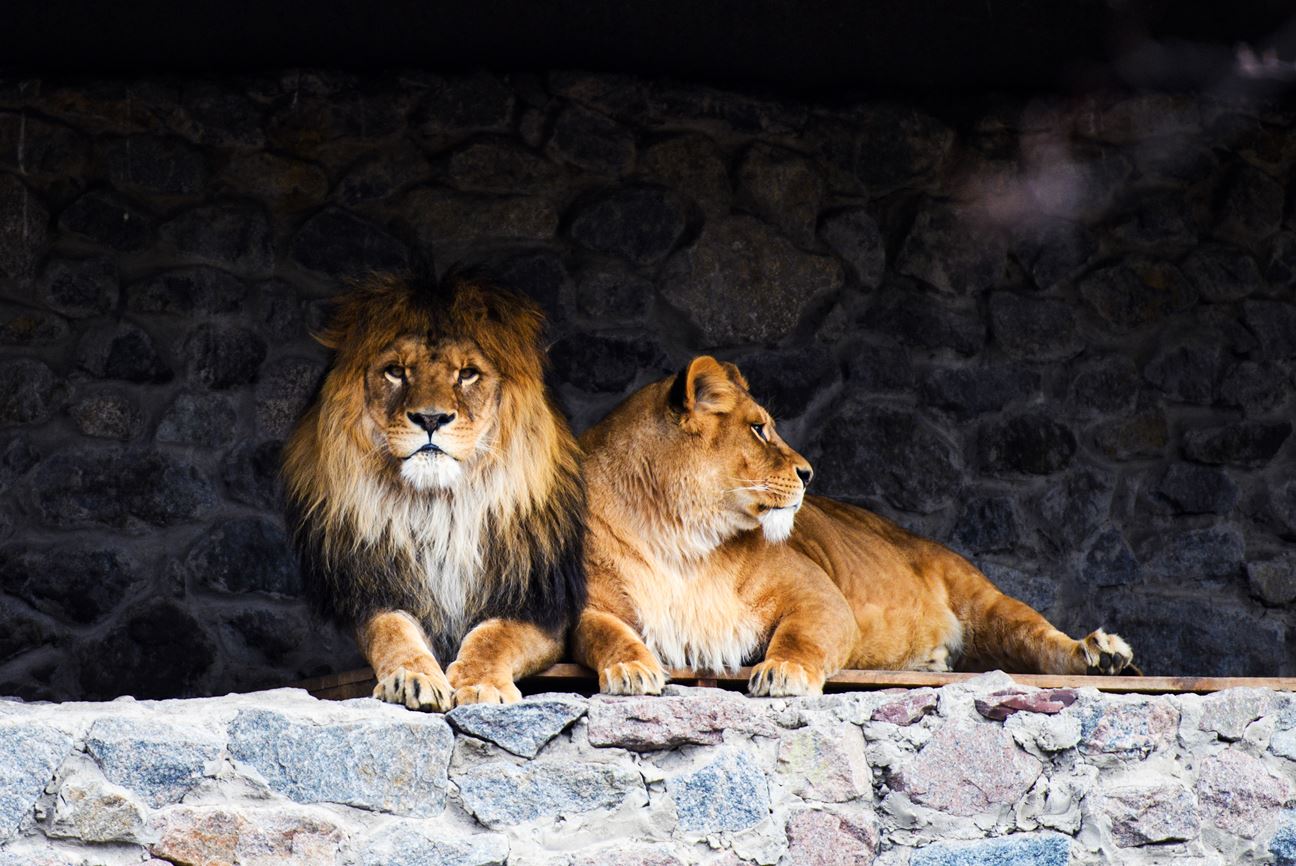
Lion Pride Hierarchy: A Lion Pride is a group or unit of lions comprising males, females and cubs - anywhere between 2-40 members. The word ‘Pride’ comes from the lions being seen as majestic. The Asian subspecies separate themselves into prides that are gender-specific, except for the mating time. African Prides typically display a pride behaviour where the females stick to the same pride for their lifetime. They are related to each other and the pride’s social structure is matriarchal in nature. Lions exhibit certain role-plays as a part of their Pride behaviour. Let’s take a look at the dynamics of lion pride.
The King of the Jungle: Commonly known as The King of the Jungle, the lion usually prefers a habitat of grasslands and plains. Male adults leave their birth prides around the age of 2-4 years. They roam around with same-gender prides until they reach maturity and eventually establish their own prides. Males reach sexual maturity at 5 years. They are responsible for the security of the pride. Though they are primarily responsible for safeguarding their pride, they are also responsible for defending the territory and for hunting. There usually exists one or max two dominant males who have the right to mate with females. The males don’t have a significant role in raising the cubs except for protection. However, they are also known to attack the cubs in times of scarcity of food and also to form their own pride, as the females won’t mate until the cubs reach a certain age.
The Lion Queen: The number of females in a pride is more than males. They are primarily responsible for hunting. They are also responsible to provide care to the cubs. Females reach sexual maturity at 4 years. They often work together to hunt and are the real breadwinners. Females of pride usually give birth at the same time and raise the cubs mutually. The females in a pride stick together and have extremely strong maternal instincts.
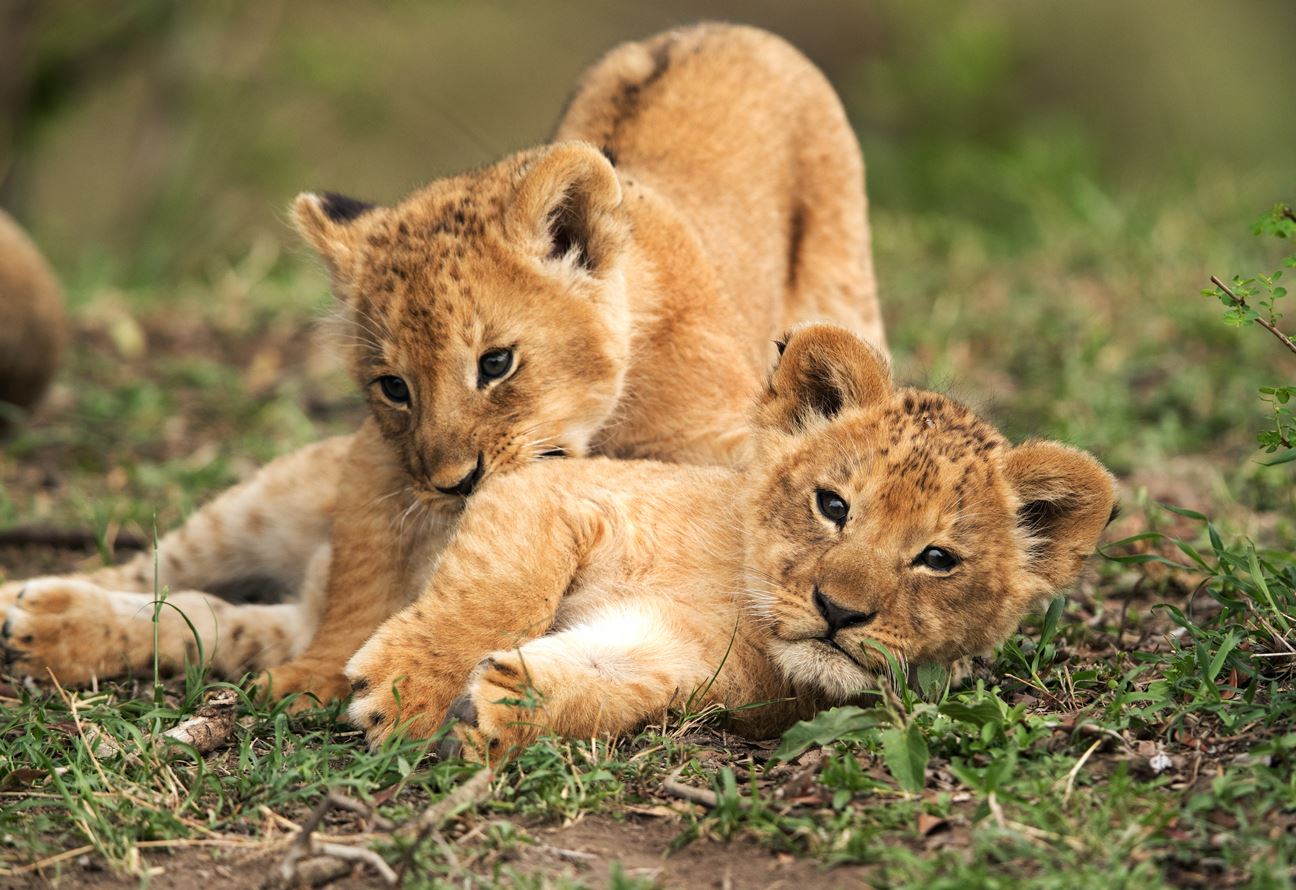
Cubs Survival and Role: Newborn cubs weigh between 27 and 26 ounces. Initially, the cubs are blind and deaf. They develop the ability to see and hear in the first two weeks. Hunting begins when they’re around 5-6 months, but they live in their mother’s protection until they’re 18 months old. Some develop individual skill sets at 3 years until when they stay with their mothers. Cubs under a year are, at times, killed by adult male lions as well as buffalos. Cubs, at times, starve when their mothers eat in times of scarcity. The mothers take care of their cubs not for more than 5-7 months, which results in lower chances of survival.
Interesting Facts About Lions: Habitat, Diet, and Vision.
Lions are from an animal group called mammals and have a life span of 10-14 years. The common habitat is Africa, except for some areas in the Sahara desert and tropical rainforests. Lions are also found in India. Tigers, jaguars and leopards are some of Lion’s relatives. Lions prefer prey that is medium to large — ungulates from rodents to huge rhinoceros, buffalo, gemsbok and other antelopes, giraffes, wildebeest, and Zebras. In India, however, lions eat domestic cattle when available, and chital deer are a majority of their diet.
Lions engage in play-fighting, which serves as a bonding medium in the pride members and provides efficient training for preying. Lions have the biggest mouths in the animal kingdom which can open up to 1 foot. The tongue of a lion is rough. When lions scratch their toes on trees, it’s marking their territory with the help of the scent coming from the scent glands between their toes. The vision of lions is terrific. They have an edge over humans as their eyes are 6 times more sensitive and hence helping them hunt their prey better at night. At night, their eyes capture moonlight with the help of a coating which is reflective at the back of their eyes. The fur underneath their eyes helps reflect light better. The only drawback with the eyes of a lion is that they don’t have the ability to move well sideways, making the lion move the entire head when it wants to look anywhere.
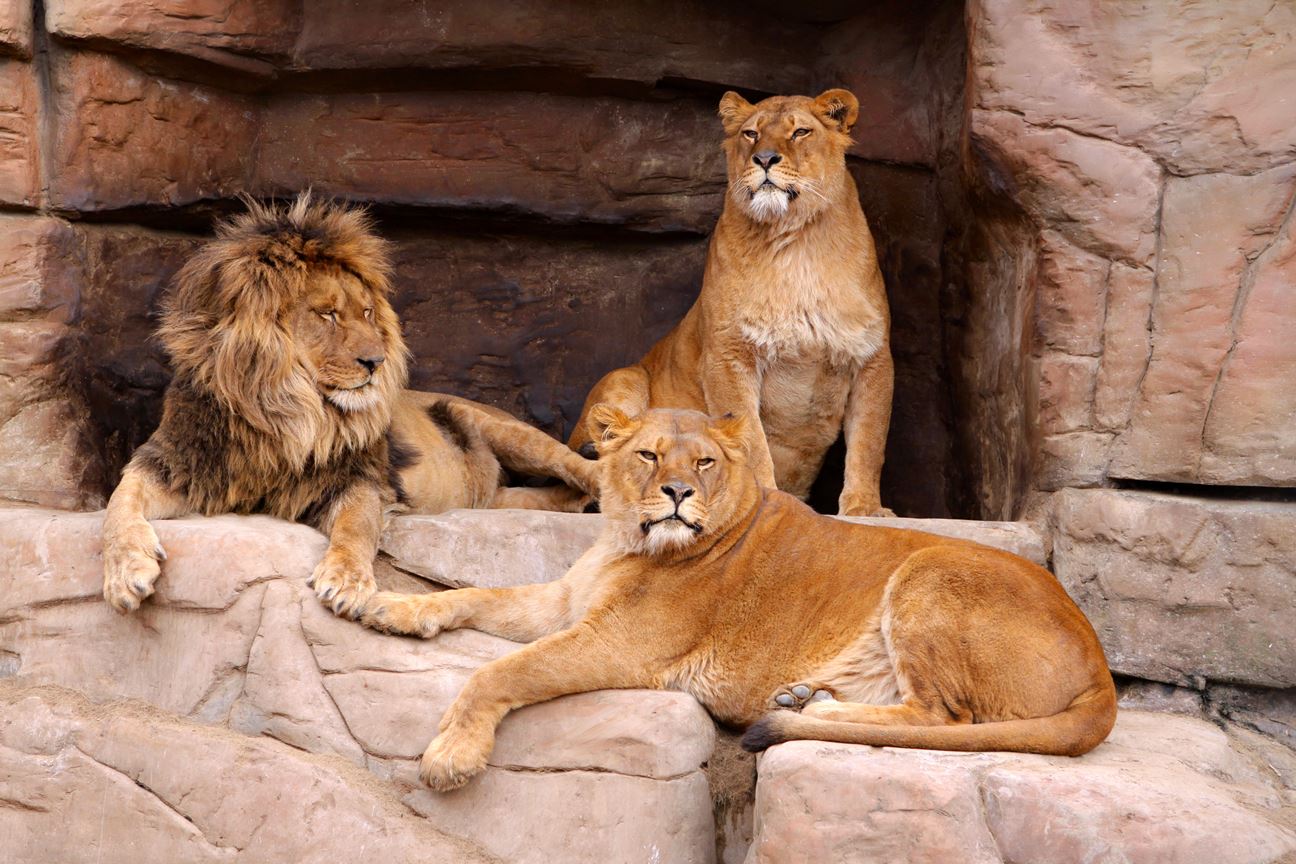
African Lion Characteristics: These are mostly found in Sub-Saharan Africa. Unlike Asian lions who have a bifurcated infraorbital foramen, African Lions have only one infraorbital foramen, which is a hole in the skull for nerves and blood vessels to the eyes. As compared to the Asian lions they’re larger with thicker fur and manes that are longer. Their tail tufts are shorter than the Asian Lions. Unlike Asian lions, African lions do not have a longitudinal fold of skin along its belly. The different sizes and patterns of hunting prey results in different pride composition in these two.
White Lions: A common habitat for white lions is Savannah, woodland, desert. White lions are not Albino animals. The rare gene causes the lighter pigmentation. The rare genetic condition is called Leucism. White lions were almost extinct but were reintroduced around 2004. Their diet includes a variety of herbivorous animals. For the offspring to be white coloured, the parents either need to be white or carry the rare gene. Uncontrolled trading and hunting cause a threat to these lions. Botswana, Kenya and local communities in the Timbavati region consider white lions as National assets symbolising authority and pride.
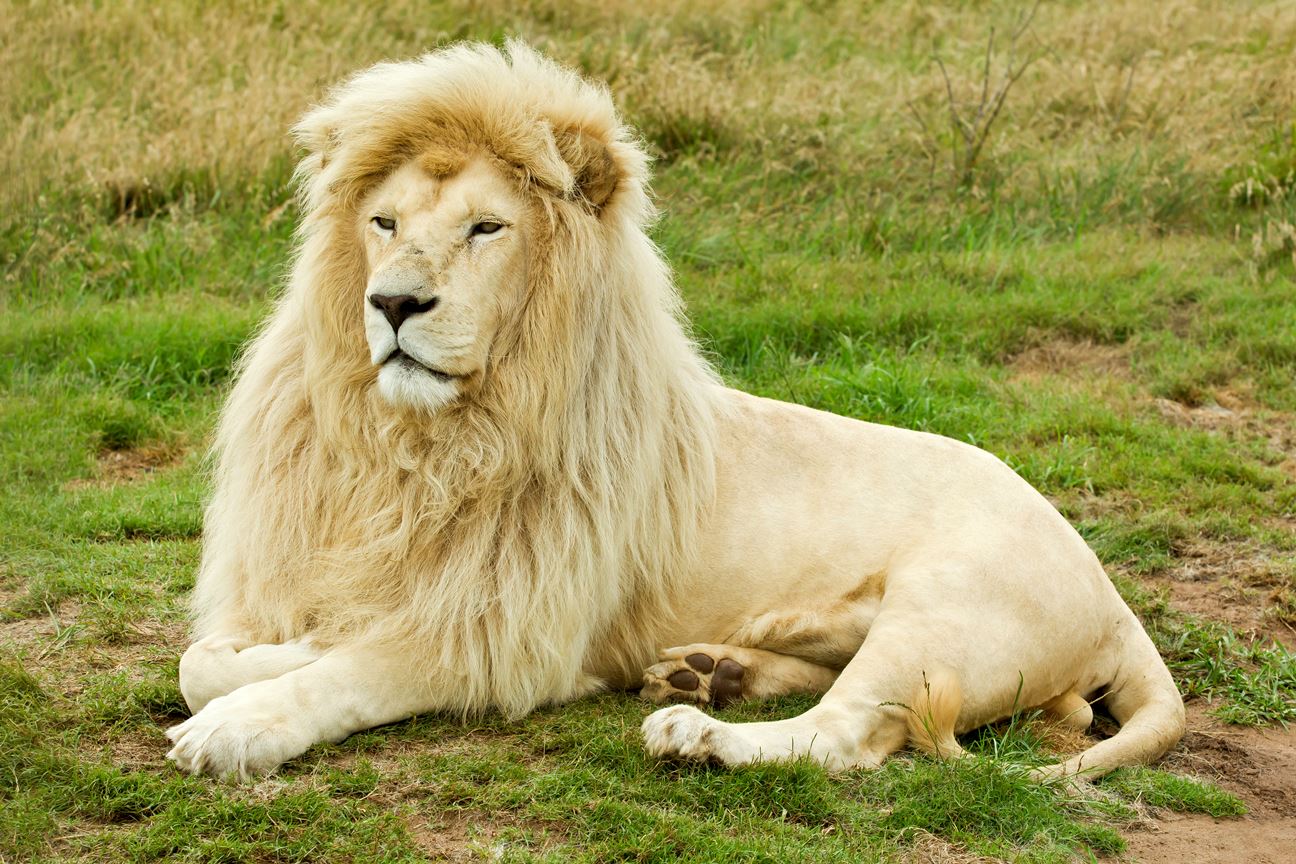
Lion Communications:
Lions communicate with each other in various ways. They communicate with their pride as well as outside of the pride. Communication among and outside one’s pride is to keep social order. ‘Out of order’ state is prominently showcased by dominant male adults through a tender bite on the neck or a gentle swat of the paw. The intention of these actions is to keep things in control and not about causing harm or starting a fight. Both adult males and females indulge in play in order to engage cubs in the process of learning to hunt and protect oneself. The lions bow before a playful attack to ensure the opponent knows the intention is fun.
Appearance: There are some other ways in which lions communicate. Some information is also conveyed through appearance. The male lion’s mane plays a significant role. It gives the impression of a large head conveying threat. The colour of the mane seems to show the lion's age. The males with the longest and darkest manes are preferred by female lions.
Mannerisms: The teeth can symbolise danger and let everyone know how hurtful the bite can be. However, baring teeth signifies strength and an attitude that will keep the opponents away. Lion's communication with others outside the pride is usually for the protection of territory or for resources. For marking territories, lions use their urine that signifies borders. The scent is considered as a sign of restriction, crossing of which may lead to a conflict. Lions stare at those who come close to their territories. If the stare doesn’t scare them enough, they roar indicating power. The roar communicates its majesty and pride. This roar is audible even 8 kilometres away.
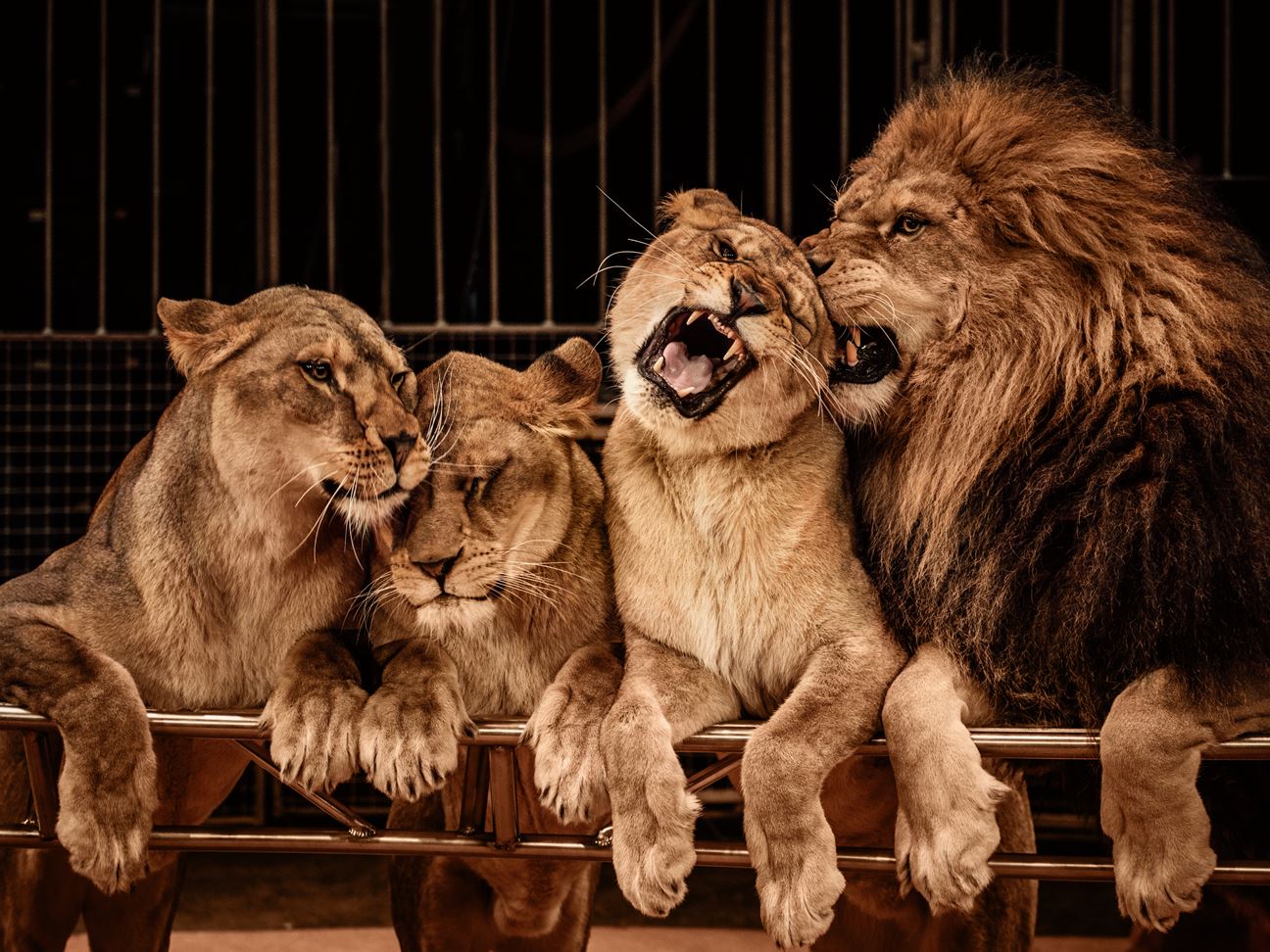
Sounds: Lions communicate through a range of peaceful tactile actions such as rubbing their heads and licking each other. This is also a common greeting behaviour for lions. Lions also communicate through vocalisations with varying intensity and pitch. These vocalisations include purrs, snarls, meows and hissing.
The roaring is louder when it comes from a male and is usually while they are most active, particularly at sunrise or before sunset. Roars can be used for various reasons. Sometimes roars are used for intimidating other animals to show their majesty, and at times it’s protecting their territory. It is also for other members of the pride to locate other lions of the pride and, at times, to communicate bonds and emotions they share.
Roars are used in the mating season to signal an interest in a lioness. The roar is less loud but deeper. Roar can also signify that the lion is hurt and is experiencing pain. Lions also make a variety of sounds when they are engaged in a playful activity and feel happy.
Humming: Lion's hum when they feel content. Humming is usually during nursing and affectionate interactions.
Puffing: Signifies a pleasant and harmonious approach.
Woofing: This sound is common when a lion is surprised or frightened.
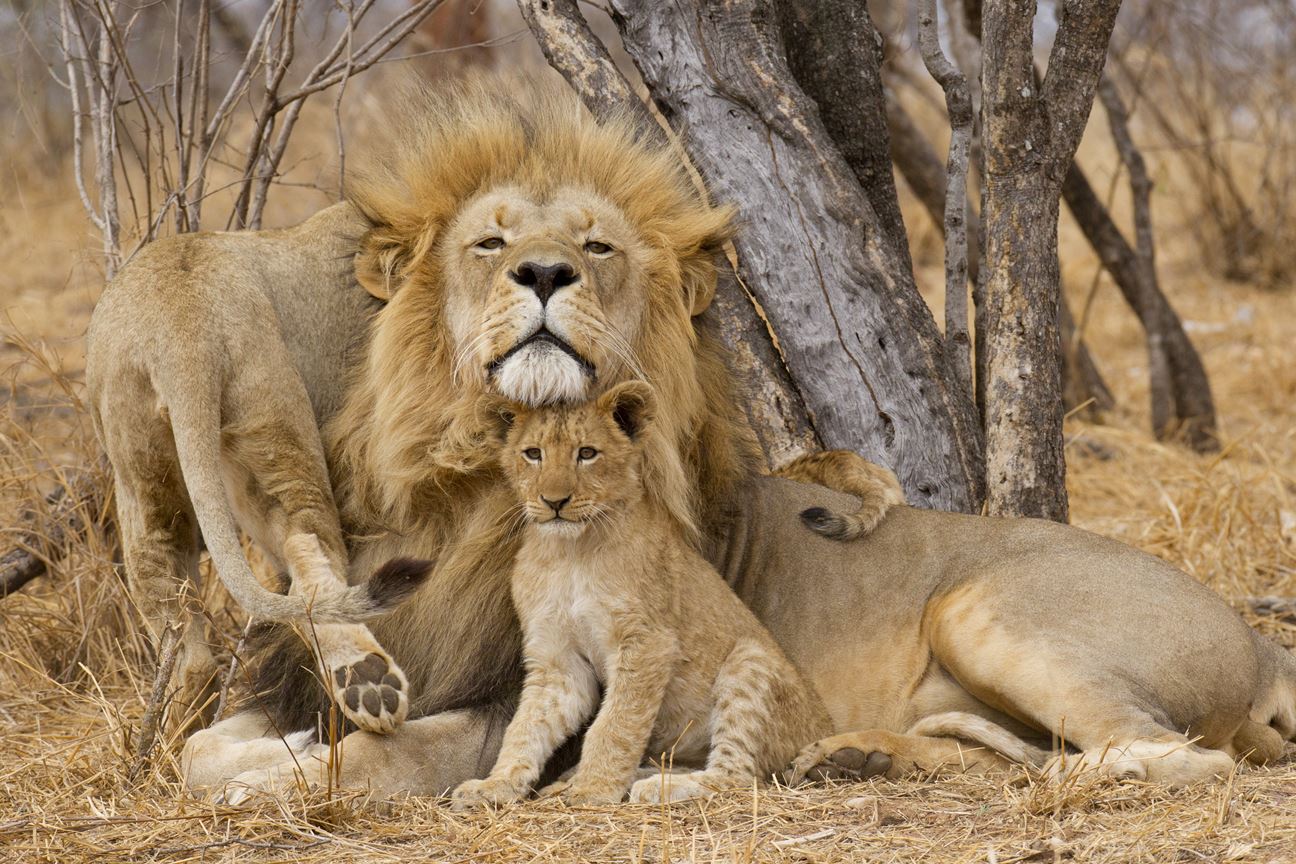
Unfortunately, there are very few lions left now. A century ago, the population of lions was 200,000 which has reduced to around 39,000 today. There are a lot of awareness programs to prevent the extinction of this beautiful species. World Lion Day is celebrated every year on August 10 since 2013. Renowned wildlife photographers Dereck and Beverly Joubert along with National Geographic are the key players in this initiative. Education, awareness and solutions to protect their habitats have become the most important part of celebrating World Lion Day!